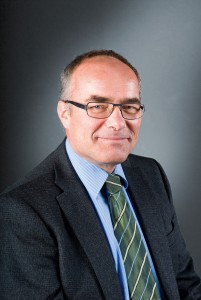
(Chief Editor Mining Report Glückauf)
Editorial
In this present edition of Mining Report Glückauf I shall pick up on a number of topics, some of which also featured at various conferences and symposia held over the summer.
At this point I should like in particular to mention two conferences that Germany has hosted this year. The first of these was the Aachen International Mining Symposium (AIMS) at the end of May, which for the last time was held under the direction of Professor Per Nicolai Martens. Thanks in no small measure to the efforts of Prof. Martens over many years these events have now acquired a high international standing. And this is one of a number of reasons why the German mining community owes him a debt of gratitude. In handing over the reins of the Mining Engineering Department at RWTH Aachen University to his successor, Prof. Bernd Lottermoser, he has also entrusted the future of the AIMS to his care.
The second event that I wish to highlight is the Annual Conference of the Society of Mining Professors (SOMP), which this year drew mining academics from all over the world to the venue in Saxony to celebrate the 150th anniversary of the founding of the Freiberg Academy of Mining. The fact that this conference is being held in Germany in the first place can be taken as evidence of the global recognition of the mining skills and expertise that we have developed here.
It is against this background that the themes selected for this edition have to be seen. Occupational safety and process efficiency are key areas of activity for every sector, not just the mining industry. The paper under the heading of ISSA Mining illustrates that both these factors have to work hand in hand if economic success is to be achieved. Cross-linking coal face systems with a high level of automation helps improve efficiency and industrial safety just as much as measures aimed at a self-sustaining mine control technology. In underground hard rock mining the use of modern rail transport installations makes for increased productivity and constitutes a cost-effective alternative to other types of haulage systems. Individual technical improvements, such as re-designed sprockets for chain scraper conveyors, help to reduce material wear and lower maintenance costs. We have also included an article that looks back at the 93-year history of FABERG, the mining standards committee, which is to cease operating at the end of 2015.
Security of supply is a theme that also features in this issue. In this context, a coal-industry perspective of the 2014 Energy Study produced by the Federal Institute for Geosciences and Natural Resources (BGR) is supplemented by an article that examines the criteria for the exploration and extraction of the rare earth elements that are so crucial for today’s new technologies.
With my best regards
Dipl.-Ing. Andreas-Peter Sitte
Chief Editor Mining Report Glückauf, Herne